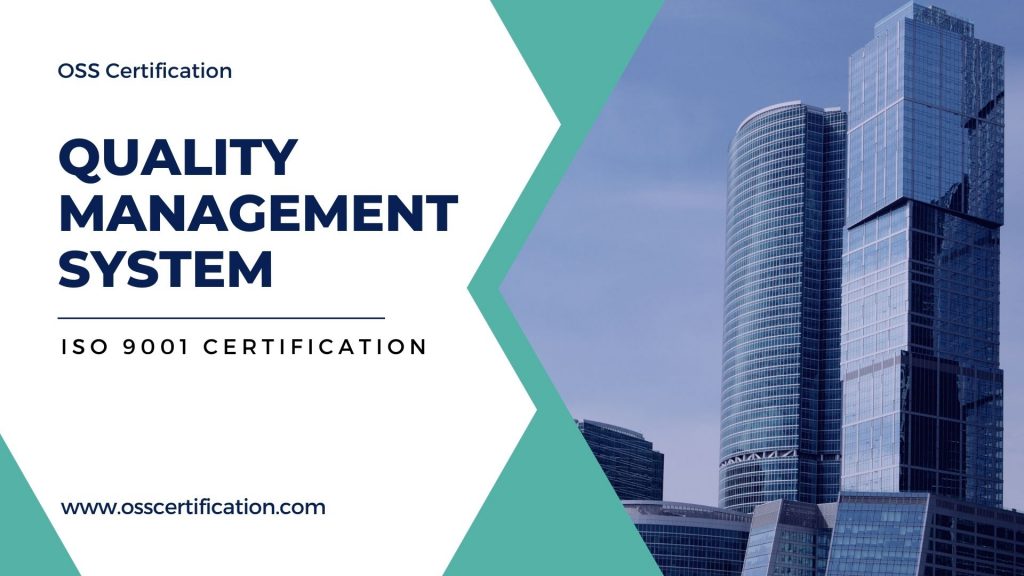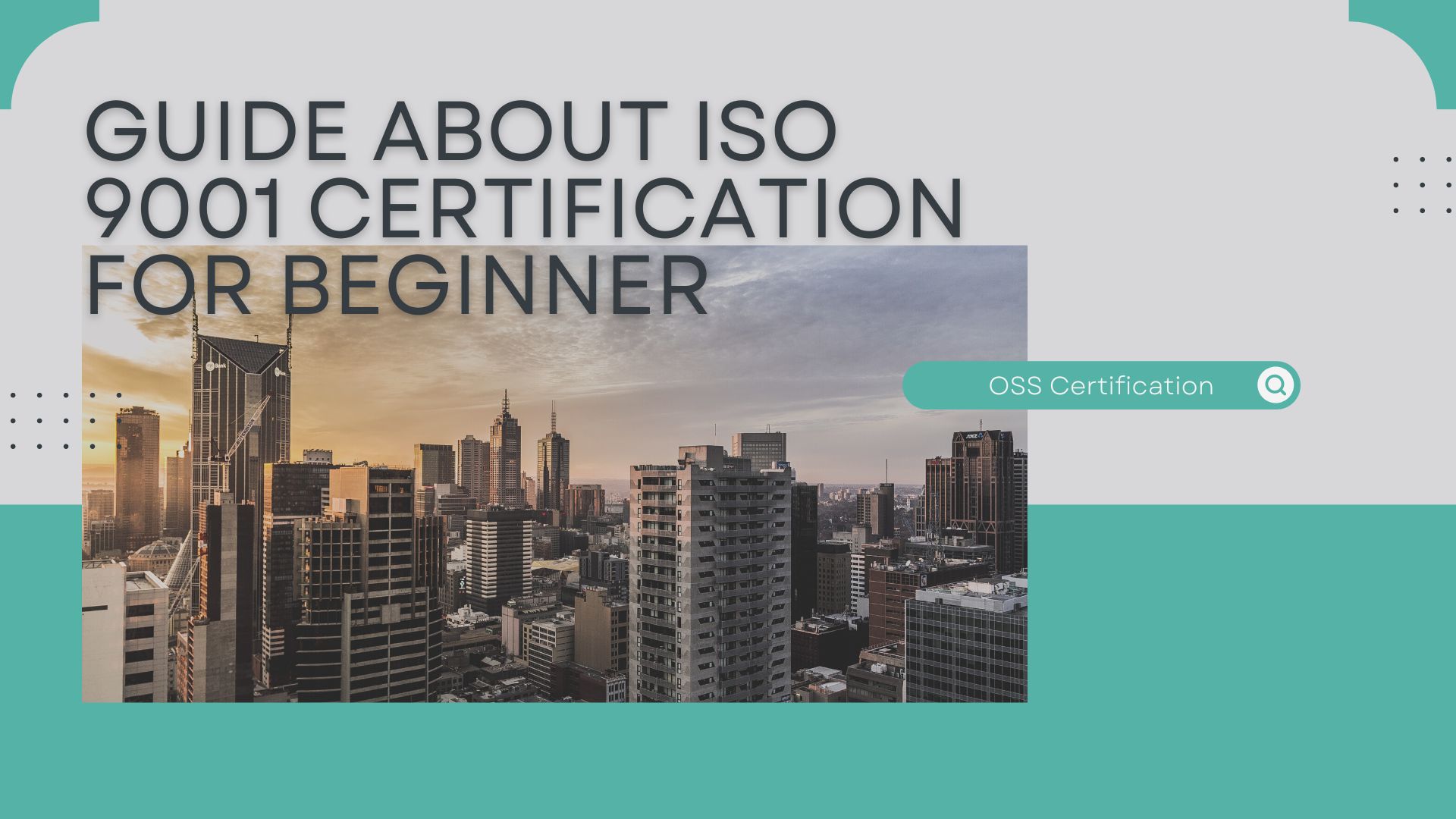A Complete Guide about ISO 9001 Certification for beginner
We are writing this blog for those organizations, that are new to ISO 9001 Certification, ISO Certification process, ISO 9001 documentation requirements, Costs involved in ISO 9001 Certification benefits of ISO 9001 Certification, and How to implement ISO 9001 Standard in the organization to get benefits of this QMS Standard for enhancement of overall performance of the organization.
So, in this blog – we will explain each and every point so that any organization new to ISO 9001 Standard gets complete Guide/knowledge about ISO 9001 Certification. This content may also add value to the organization that wants to further upgrade its implemented QMS.
First of all, we will Explain about ISO 9001 Standard, so that the user organization at least has an understanding of the ISO 9001 Standard and Its Requirements. This could help the organization take proper decisions for adopting this standard in the organization and plan for ISO 9001 Certification.
What is ISO 9001 Certification Standard and why do organizations adopt this QMS standard in the organization as business practices?
ISO 9001:2015 Standard – It is a Quality Management System (QMS) Standard that was last published in the year 2015 by the international organization of Standardization (ISO) – The purpose of this ISO 9001:2015 Standard is to – enhance customer satisfaction by the consistent supply of products/services which meets the customer requirements along with applicable regulatory requirements (if any).
This ISO 9001 Standard is a generic standard, that any type/size of Business organization may choose to implement in the organization for enhancement of productivity of the organization, enhancement of customer satisfaction, and applicable regulatory compliance. The Basic concept of the ISO 9001 Standard is to apply the Process Approach, Risk-Based Thinking, and continual Improvements (P-D-C-A). Altogether the requirements of the ISO 9001 standard provided in QMS add value to the organization for the overall enhancement of process performance and productivity – when the organization opts for this standard for effective implementation.
Also, the best part of this ISO 9001 standard is that – It is a general business practices requirement, nothing is new in this ISO 9001 requirements – most of the requirements are very general – which are into practice by the organization – So while adopting the International Standard the organization has to only make the business practice in a systematic way to perform the business. Systematic business practices as per ISO 9001 requirements add value to the organization by enhancing the process performance, productivity enhancement, and Customer satisfaction enhancement – Without any major changes or adding much more cost.
This is all about ISO 9001 Standard and it proposes, that the above information may add value for understanding ISO 9001 and why organizations adopt ISO 9001 for implementation in the organization and further looking for getting ISO 9001 Certification.
How to implement ISO 9001 Standard in the organization to get the benefits of this QMS Standard for enhancement of the overall performance of the organization?
When the organization chooses the ISO 9001 Standard for adoption in organization as a business practice. Does the First question come to the user organization How to start implementing ISO 9001 requirements in the organization? So now we are explained below how to implement this ISO 9001 for optimum benefits to the organization. The Step- by – Step – Explanation for ISO 9001 Implementation is provided below as a reference for any organization who are new to this QMS.
- Develop the Understanding of ISO 9001 requirements – (By self-learning or by taking training from any Expert)
- Look at the current process and activities of the organization and do the benchmark comparison (ISO 9001 requirement VS Current Practices) – Find out the Area which is not being practiced in the organization – Take appropriate action to cover the requirement – Which may be – Development of SOP, Training, Record Keeping or change in Infrastructure, etc so on. This is also known as GAP analysis activities – Planning for ISO 9001 implementation (further for ISO 9001 Certification).
- Identify the documents (SOP) required to Develop, Record Need to maintain, Training Need Identification, Policy & Objective of Organization, etc, So on.
- Identification of Internal and External Issues of the organization – which affective the performance of the organization and its Risk Analysis – As we know that in every organization there are several issues -which are effective the performance of the organization – It is very common in every organization – But while implementing QMS – it is advice to those issues – which are affecting the performance – May be some issues are within the organization -Known as Internal issues and some issues are external (not to the control of the organization ) External issues. Some Examples of Internal Issue – Knowledge (Due to lack of proper knowledge of Customer requirements – Products are wrongly processed – cause – Rejection of Products at Customer End) – Example of External issues – Market Competition, Economic Conditions of Country – These are Types of Issue – which is not into control of the organization but it affects the organization. So Likewise – The organization identifies the Issues and does the proper Risk analysis and takes appropriate action to reduce their significance so that the performance of the organization can be improved.
Any organization new to ISO 9001 implementation, can follow the above steps for implementation of QMS in the organization.

What are the documents required for ISO 9001 Certification?
As such there is no limit on documents and records to be maintained in the organization for ISO 9001 Certification, It all depends on the Nature, Activities, Products, and process of the organization. As said above this ISO 9001 Standard is a general requirement for Quality Management systems – which is applicable to all types/sizes of the organization. But Few documents and records are very much important for demonstrating the effective implementation of ISO 9001 standards and are given below (but it is not limited)
- Quality Manual
- Quality Policy & Objective
- Role, Responsibility
- SOP of the key process / Functions
- Record of process Monitoring and measurements (as Each stage of the process – such as In-coming, In-process and Final stage)
- Record of Training
- Record of Risk Analysis
- Record of Customer Satisfaction
- Record Internal Audit
- Record of Management Review
- Record of Non-Conformity
These are a few documents & records (But not Limited) which are at least required to be maintained in the organization on an ongoing basis to see the enhancement of productivity and performance of the organization and the same time to demonstrate the Compliance of ISO 9001 implementation and Certification.
What is the Cost involved in ISO 9001 Certification?
It is really a very basic question for any organization for thinking about the Cost of ISO 9001 Certification. So that the organization can plan its budget – It is true thinking of the organization prior to proceeding further with ISO 9001 Certification.
As I have explained above – prior to certification the organization must implement the ISO 9001:2015 Standard the organization – So if the organization chooses the option for Self-Implementation, in this case, the cost involved for Implementation -will not be an additional cost to the organization.
Yes, for ISO Certification, the organization has to pay the cost of ISO 9001 Certification to the Certification Body. Generally, the cost of ISO 9001 Certification charged by the Certification Body is not fixed – it is derived based on the nature, activities, and products of the organization. So, Some Certificate bodies charged – High, Some -Moderate, and Some -Low – It depends on the Certification Body Policy, Procedures, and market Credibility. But the organization has to do the proper market research while choosing the Certification Body of its ISO Certification, do not Run-away at Low Cost – First Look into the market and see its reputation and Credibility then Choose the Certification. While Choosing the Certification Body – do not set criteria of Low Cost – First Looks at’s accreditation, Market Acceptability of It Certificate, ask – how to verify the Certificate Authenticity, how to verify the Certificate body accreditation, validity of Certification, etc, and so on. Once the Certification Body is selected Get the QUOTE to know the Cost of ISO 9001 Certification.
What are the benefits of ISO 9001 Certification?
There are several benefits of ISO 9001 Certification, but a few of are most prominent benefits are
- Enhancement of Process Performance
- Enhancement of Customer Satisfaction
- Enhancement of Potential Business Opportunity
- Enhancement of Market Reputation and Credibility of the organization
